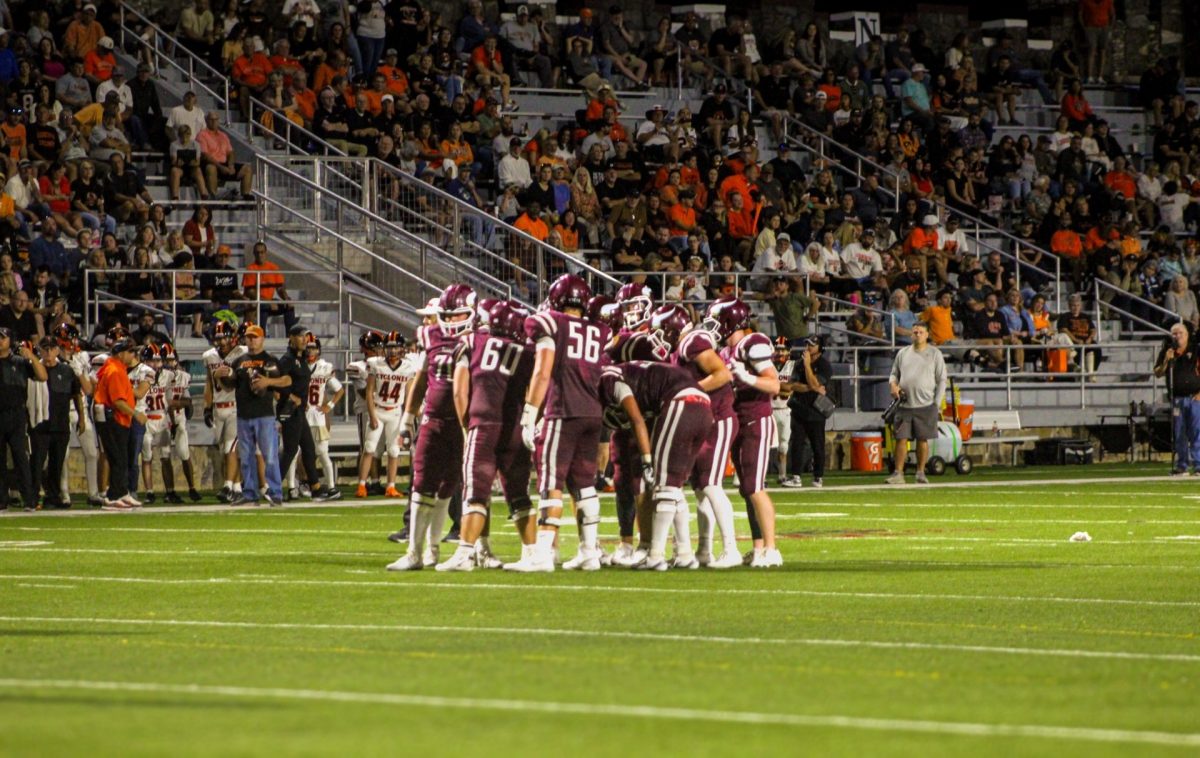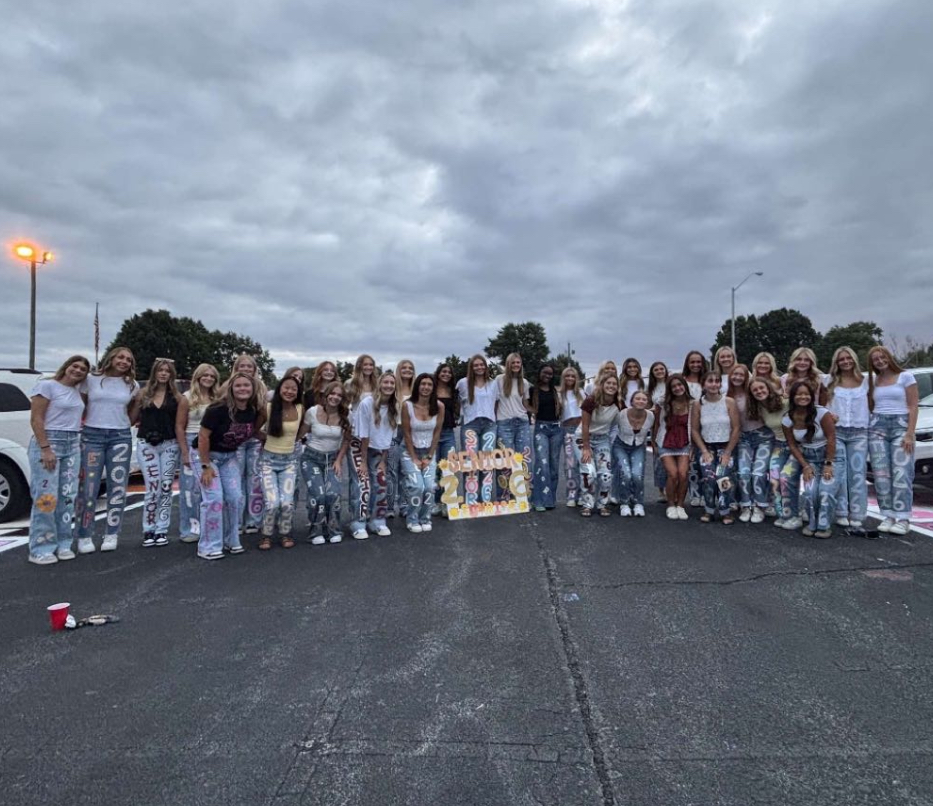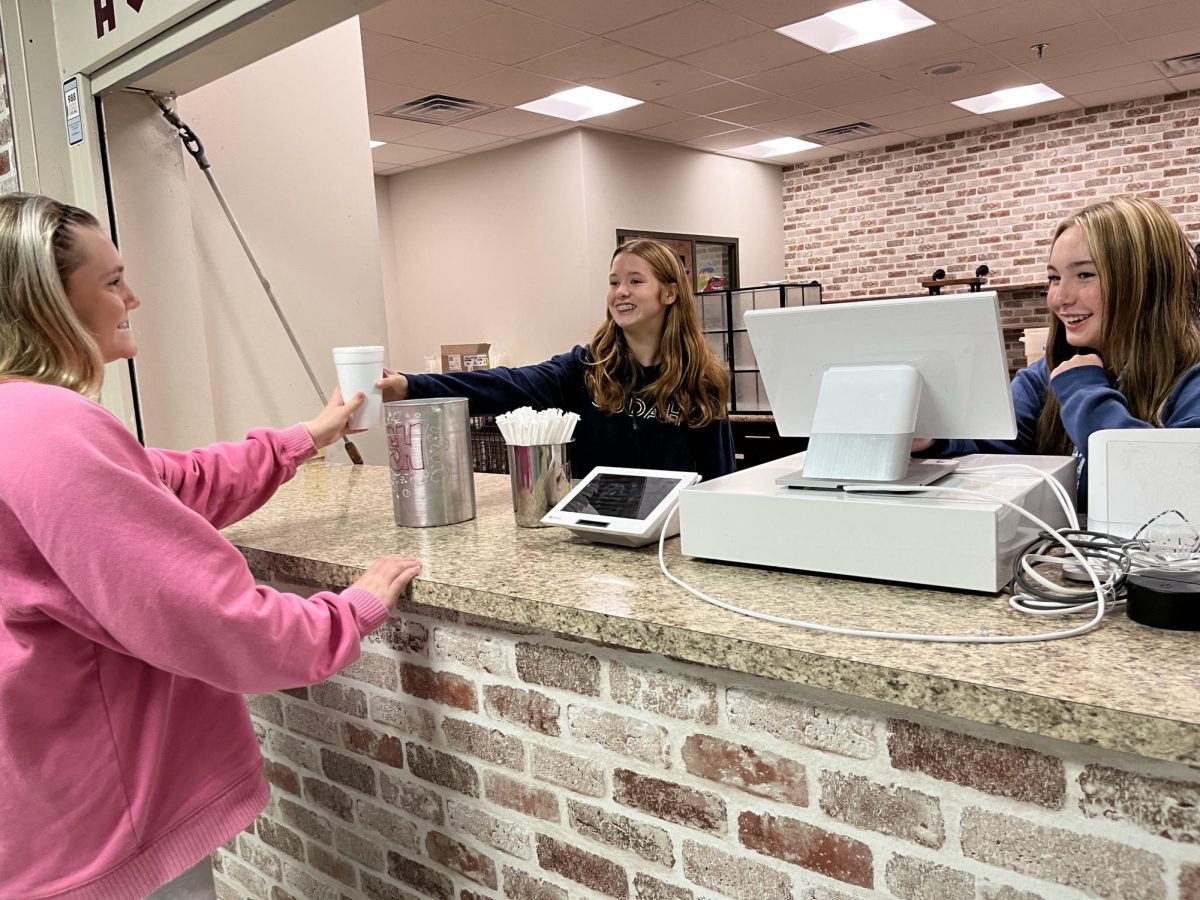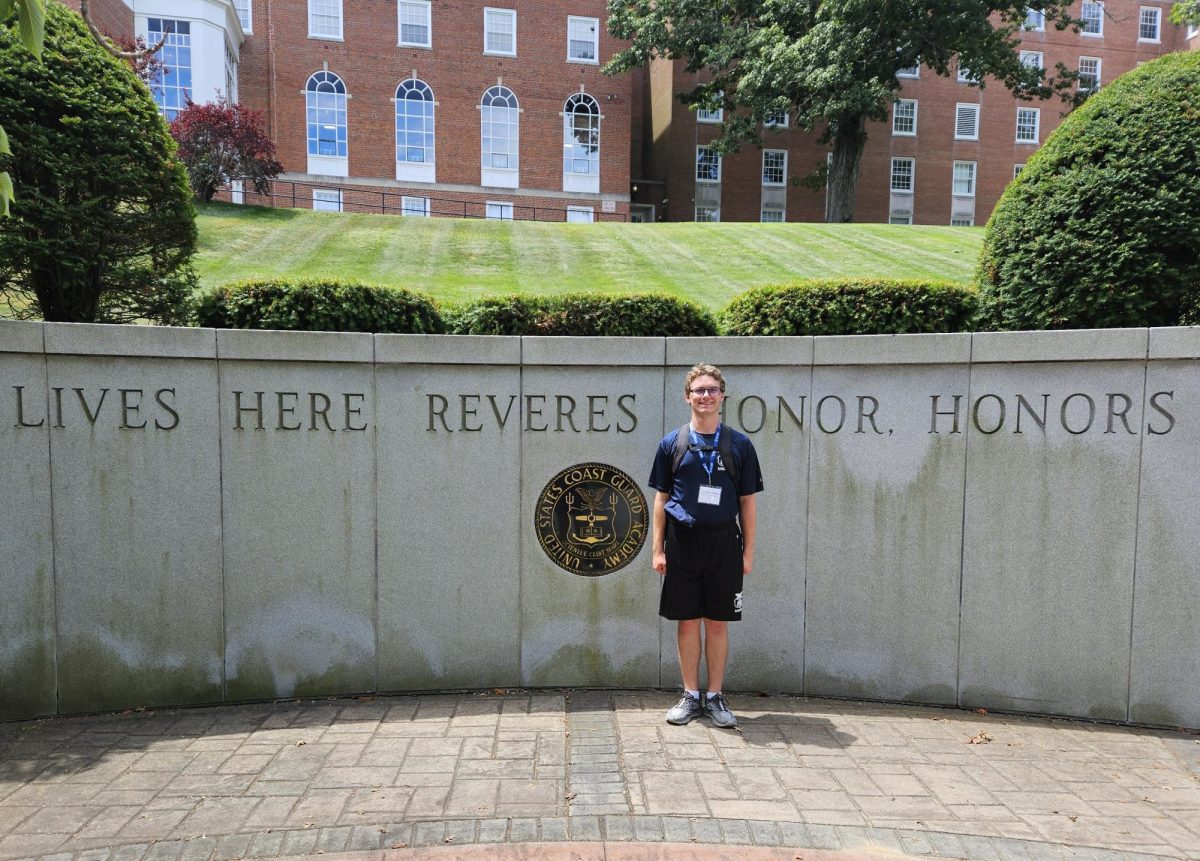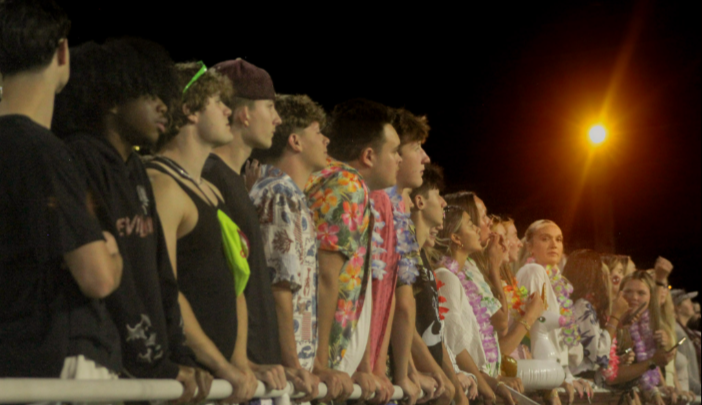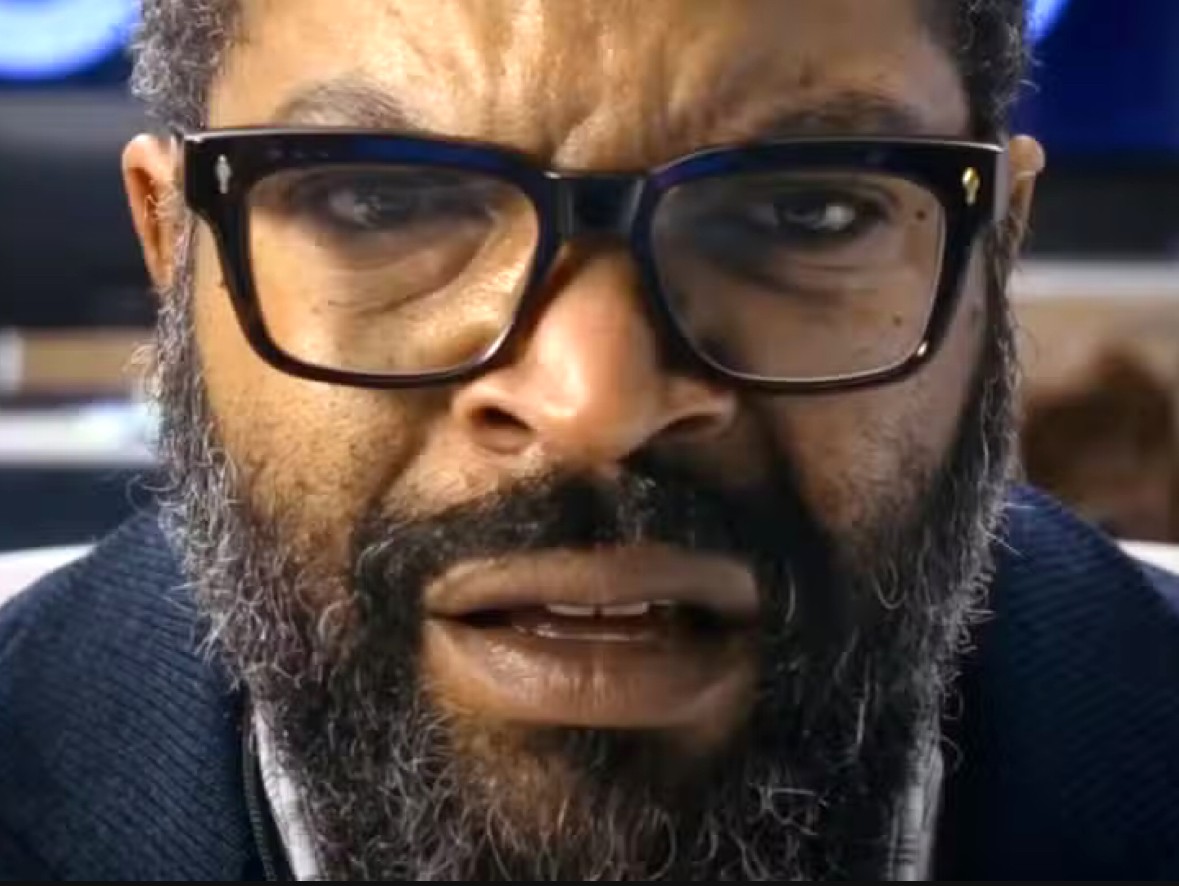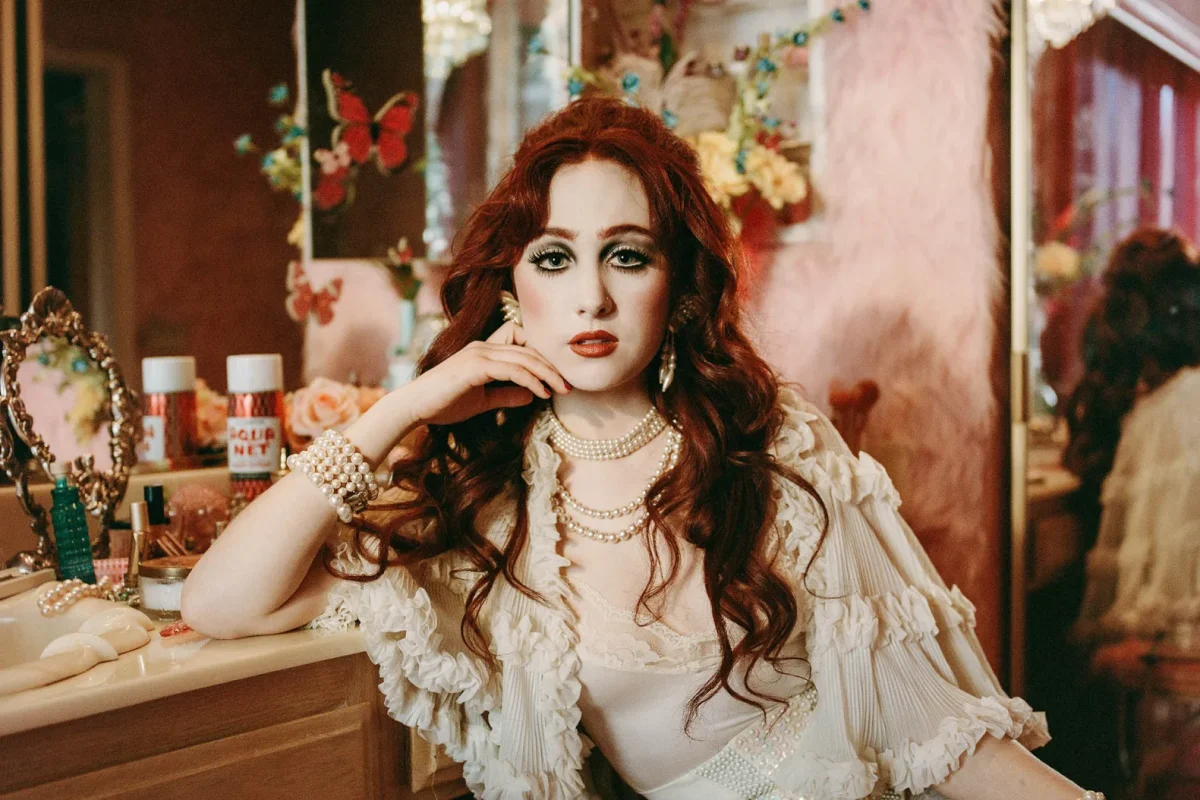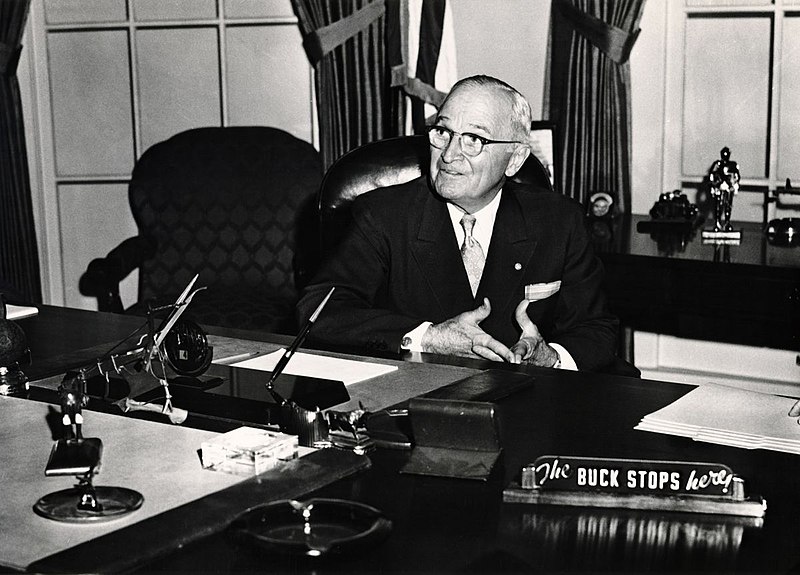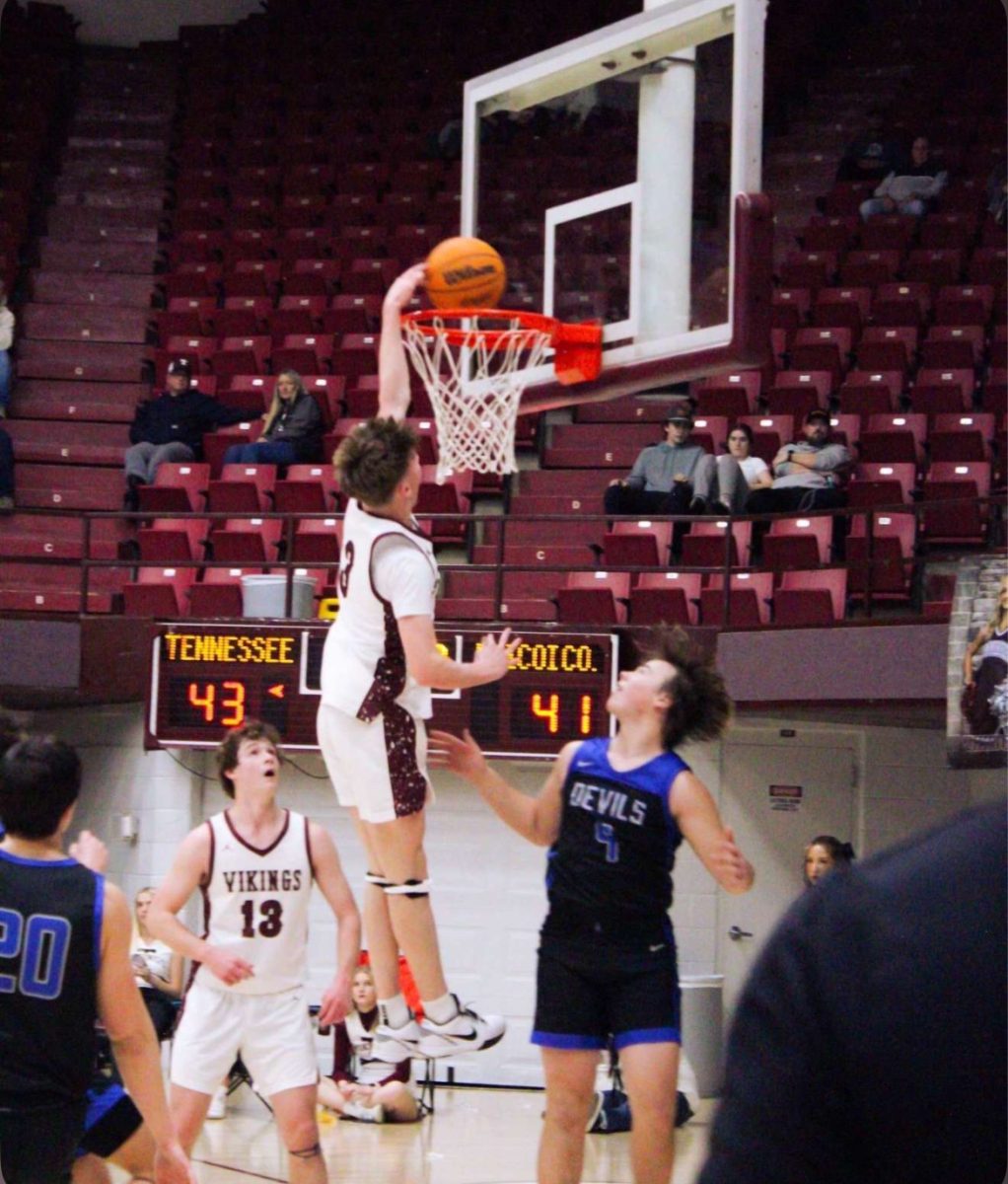Friday night lights strain the eyes, and the smell of sweat and popcorn fills the air. “V-V-V-I-K-I-I-I-N-G-S,” the crowd roars. Maroon-and-white-clad girls stunt and chant, heightening the student section’s energy.
“I grew up watching Cheer Squad and the football games, so it’s not something I grew to love; I just always had loved it,” senior varsity cheerleader Madison Manahan said.
Like other sports, cheer is often depicted in coming-of-age movies like Bring It On. These cliché films portray cheerleaders as feminine, cheeky, and aggressive. However, cheerleaders embody more than the typical archetype.
“Growing up in cheer, and coaching [it] every year, you have to establish respect from other sports, administrators, everyone,” cheer coach Micah Garrison Hill said. “Cheer has to work hard to be seen as an athlete and respected.”
Practicing three days a week, for roughly two hours each, trains them to participate in stunts: bases and backspots are the foundation. They grab the flyer’s feet and ankles, providing a platform to stand on. Essentially, the flyer is the cherry on top of the stunt.
“Going up in the air, flyers have to be mentally prepared to do frightening things,” said sophomore varsity cheerleader Keira Hamrick. “As a flyer, you have to trust that your backspot and bases will hold you up.”
To fulfill given positions efficiently, endurance and fearlessness are required. Nevertheless, the media tends to reinforce the idea that cheer isn’t a sport. This results in a specific behavior and lack of athleticism involved in the role of being a cheerleader.
“I feel like a lot of the time they’re portrayed to have a certain attitude,” said senior student section member Margaux Trombetta. “It’s unfair because it’s not representing the majority of the sport.”
Sophomore base Lily Hughes expresses that many view the sport as just glamor and sparkles.
“We put in a lot of time and effort into looking good but the media only sees a fraction. They only see what they want to see: the part that looks easy and showy,” said Hughes.
Through all of these setbacks, these athletes are still able to find their love for the sport regardless of how they are presented and how hard they have to work to prove their skills.
“You don’t just do it for the pom poms; you do it for something that makes you part of a team, part of a program, and part of a community,” said Hughes.





